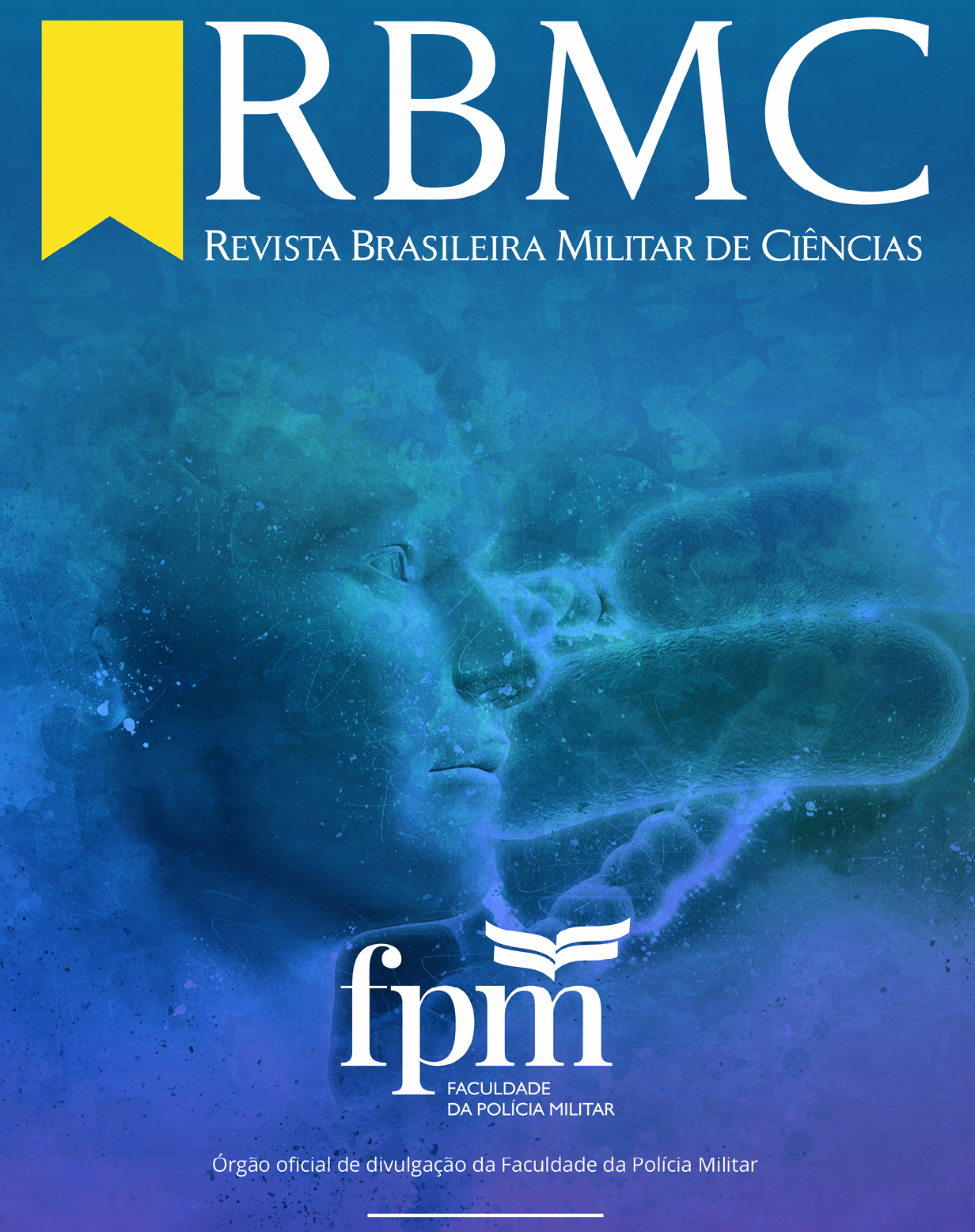In silico investigation of Annona coriacea species candidates with effect on the central nervous system
DOI:
https://doi.org/10.36414/rbmc.v9i23.160Palabras clave:
In silico modeling, Organic chemicals, Mental disordersResumen
Annona coriacea, known by names such as "araticum", "araticum smooth" and "marolo", is a plant popularly used for its antiprotozoal, antirheumatic, anthelmintic, and anti-inflammatory properties, among others. In addition, studies with mice showed anxiolytic and antidepressant activity. This study sought to identify and elucidate the potential mechanisms involved in the activities above. The method of choice employed to predict biological activity, pharmacodynamics, and toxicity was in silico tools. In addition, docking and redocking were performed. Among 28 eligible compounds, two were the most promising, trigonelline and gallic acid. This study opens perspectives for in vitro and in vivo studies with these isolated structures.
Descargas
Citas
Monteiro AB, Rodrigues CKS, Nascimento EP, Sales VS, Delmondes GA, Costa MHN, et al. Anxiolytic and antidepressant-like effects of Annona coriacea (Mart.) and caffeic acid in mice. Food Chem Toxicol. 2020;136:e111049.
Rocha GNSAO, Dutra LM, Lorenzo VP, Almeida JRGDS. Phytochemicals and biological properties of Annona coriacea Mart. (Annonaceae): a systematic review from 1971 to 2020. Chem Biol Interact. 2021;336:e109390.
Kasper DL. Medicina interna de Harrison. 19ª ed. Porto Alegre: AMGH Editora; 2017. p. 2708.
Bonadiman CSC, Passos VMA, Mooney M, Naghavi M, Melo APS. The burden of disease attributable to mental and substance use disorders in Brazil: Global Burden of Disease Study, 1990 and 2015. Rev Bras Epidemiol. 2017; 20:191-204.
Leonardo BC, Cunha DF, Sakae TM, Remor KV. Prevalence of mental disorders and use of psychiatric drugs in patients of an ambulatory medical specialties. ACM Arq Catarin Med. 2017;46(2):39-52.
Moda TL. Modelagem In silico de propriedades farmacocinéticas para a avaliação de candidatos a novos fármacos [tese]. Universidade Federal de São Carlos: Instituto de Física de São Carlos; 2011; 218 p.
Du J, Guo J, Kang D, Li Z, Wang G, Wu J, et al. New techniques and strategies in drug discovery. Chin Chem Lett. 2020;31(6):1395-400.
Pinzi L, Rastelli G. Molecular docking: shifting paradigms in drug discovery. Int J Mol Sci. 2019;20:4331.
Filimonov DA, Lagunin AA, Gloriozova TA, et al. Prediction of the Biological Activity Spectra of Organic Compounds Using the Pass Online Web Resource. Chem Heterocycl Comp. 2014;50:444-57.
Daina A, Michielin O, Zoete V. SwissADME: a free web tool to evaluate pharmacokinetics, drug-likeness and medicinal chemistry friendliness of small molecules. Sci Rep. 2017;7:42717.
Banerjee P, Eckert AO, Schrey AK, Preissner R. ProTox-II: a webserver for the prediction of toxicity of chemicals. Nucleic Acids Res. 2018 Jul 2;46(W1):W257-W263.
Daina A, Michielin O, Zoete V. SwissTargetPrediction: updated data and new features for efficient prediction of protein targets of small molecules. Nucleic Acids Res. 2019;47(W1):W357-W364.
Fan J, Fu A, Zhang L. Progress in molecular docking. Quant Biol. 2019;7:83-89.
Ashihara H. Plant Biochemistry: Trigonelline Biosynthesis in Coffea arabica and Coffea canephora. In: Preedy VR. Coffee in Health and Disease Prevention. [place unknown: publisher unknown]; 2015. p. 19-28.
Breukelaar IA, Erlinger M, Harris A, Boyce P, Hazell P, Grieve SM, et al. Investigating the neural basis of cognitive control dysfunction in mood disorders. Bipolar Disord. 2020; 22(3): 286-95.
Zhang L, Zhang J, You Z. Switching of the Microglial Activation Phenotype Is a Possible Treatment for Depression Disorder. Front Cell Neurosci. 2018;12:306.
Fitzpatrick LR, Woldemariam T. Small-Molecule Drugs for the Treatment of Inflammatory Bowel Disease. In: Chackalamannil S, Rotella D, Ward SE. Comprehensive Medicinal Chemistry III. 8 ed. [place unknown]: Elsevier; 2017. p. 495-510.
Can OD, Turan N, Özkay ÜD, Öztürk Y. Antidepressant-like effect of gallic acid in mice: Dual involvement of serotonergic and catecholaminergic systems. Life Sci. 2017;190:110-117.
Fricke-Galindo I, Pérez-Aldana BE, Macías-Kauffer LR, González-Arredondo S, Dávila-Ortiz de Montellano D, Aviña-Cervantes CL, et al. Impact of COMT, PRODH and DISC1 Genetic Variants on Cognitive Performance of Patients with Schizophrenia. Arch Med Res. 2022;53(4):388-98.
Kadowaki M, Ootani E, Sugihara N, Furuno K. Inhibitory effects of catechin gallates on O-methyltransferase of protocatechuic acid in rat liver cytosolic preparations and cultured hepatocytes. Biol Pharm Bull. 2005;28(8):1509-13.
Khalili M, Alavi M, Esmaeil-Jamaat E, Baluchnejadmojarad T, Roghani M. Trigonelline mitigates lipopolysaccharide-induced learning and memory impairment in the rat due to its anti-oxidative and anti-inflammatory effect. Int Immunopharmacol. 2018;61:355-62.
Descargas
Publicado
Cómo citar
Número
Sección
Licencia
Derechos de autor 2023 REVISTA BRASILEIRA MILITAR DE CIÊNCIAS

Esta obra está bajo una licencia internacional Creative Commons Atribución-NoComercial-SinDerivadas 4.0.
A submissão de originais para a Revista Brasileira Militar de Ciências implica na transferência, pelos autores, dos direitos de publicação digital. Os autores somente poderão utilizar os mesmos resultados em outras publicações indicando claramente a Revista Brasileira Militar de Ciências como o meio da publicação original. Em virtude de ser uma revista de acesso aberto, permite-se o uso gratuito dos artigos em aplicações educacionais, científicas, não comerciais, desde que citada a fonte (por favor, veja a LicençaCreative Commons no rodapé desta página)



